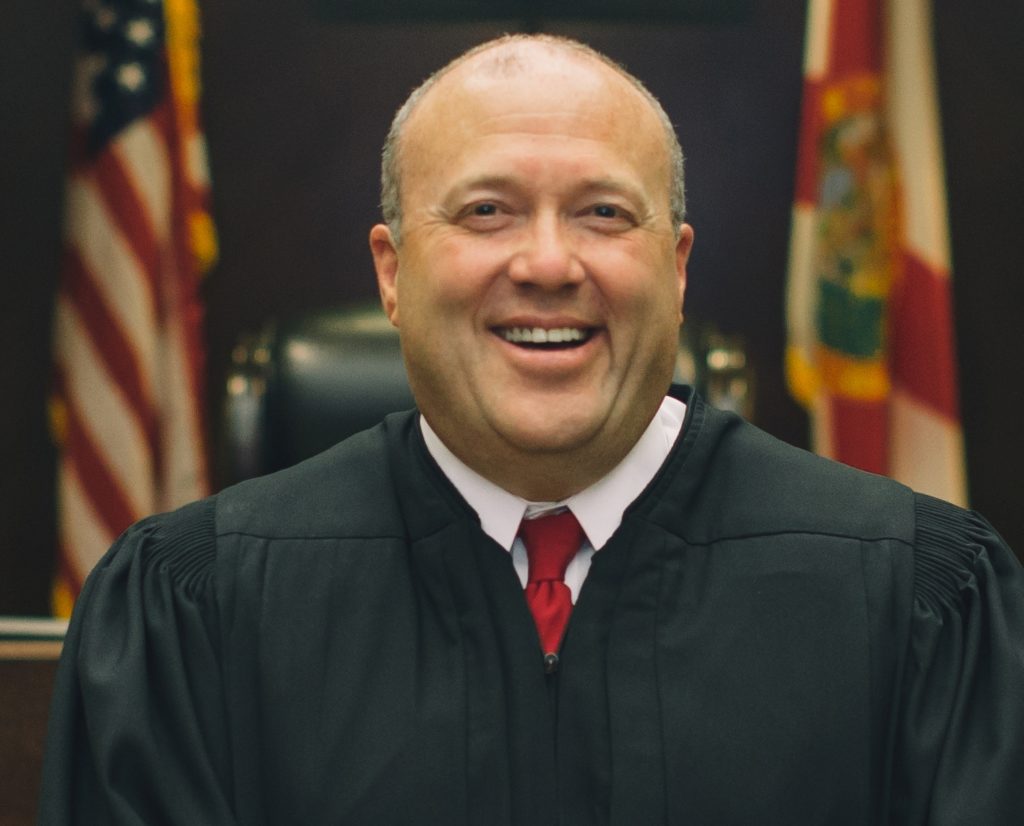
The preliminary ruling comes the same day for protective injunctions
Ask Judge Smith

Part four of a four-part series on injunction hearings that is running as part of Domestic Violence Awareness Month.
Victims of domestic violence, dating violence, repeat violence, sexual violence, or stalking may petition the circuit court for protective injunctions. The same day a petition is filed, a judge reviews it and makes a preliminary ruling.
The judge may deny the petition outright, schedule the case for a hearing within two weeks, or enter a temporary injunction if it appears that the victim is in imminent danger of harm. Due process of law requires the respondent to be put on notice and provided with an opportunity to be heard.
Both parties have the right to counsel, but, unlike in criminal cases, courts do not appoint publicly funded lawyers to represent people who cannot afford private counsel. As a result, most parties represent themselves. When that happens, the judge asks questions and allows each side to present their cases. Few injunction hearings involve two lawyers.
Parties should arrange for crucial witnesses to attend and testify. Petitioners’ should call witnesses who can prove the alleged abuse or repeat any admissions the respondent has made. Respondents should call witnesses who can refute the suspected abuse or expose any embellishments.
Witnesses may be limited to testifying about what they know on a firsthand basis. Generally, this means what they directly observed or sensed. They may not be able to testify about something they read or repeat what they heard someone else say unless an exception to the rule against hearsay applies.
Witnesses often include family members, friends, medical professionals, and law enforcement officers. Unless the court enters an order allowing it beforehand, parties should not bring minor children to their injunction hearings.
Evidence includes testimony, documents, video recordings, and audio recordings. Consider these two examples. First, a battered wife may offer into evidence photographs of her bruised and swollen face as evidence of the injuries she sustained when her husband punched her face. Second, a stalking victim may offer into evidence a print-out of the 306 texts his ex-girlfriend sent him the weekend after their break-up.
People often use their cell phones to show and describe photographs, text messages, or screenshots of communications made through social media. Parties should file any document, photo, or other tangible items of evidence they intend to rely on with the court clerk and serve copies on their opponents before their hearings.
Petitioners must prove their cases by the greater weight of the evidence. Respondents enjoy the Fifth Amendment right against self-incrimination, and courts remind them that they don’t have to testify.
Injunctions typically prohibit respondents from making direct or indirect contact with petitioners, including face-to-face encounters, phone calls, text messages, emails, carrier pigeons, and other communication forms.
Enjoined respondents can’t come within 500 feet of petitioners’ homes or workplaces or within 100 feet of their cars. Respondents may also be required to surrender their firearms, ammunition, and weapons.
Respondents who violate protective injunctions may be arrested, jailed, and prosecuted. Notwithstanding, victims should remain careful and vigilant because injunctions protect them only to the extent that respondents obey the law.
In my next column, I’ll answer more questions about injunctions.
The Honorable J. Layne Smith is a Circuit Judge and author of “Civics, Law, and Justice—How We Became U.S.” Send your questions to askjudgesmith@gmail.com.







